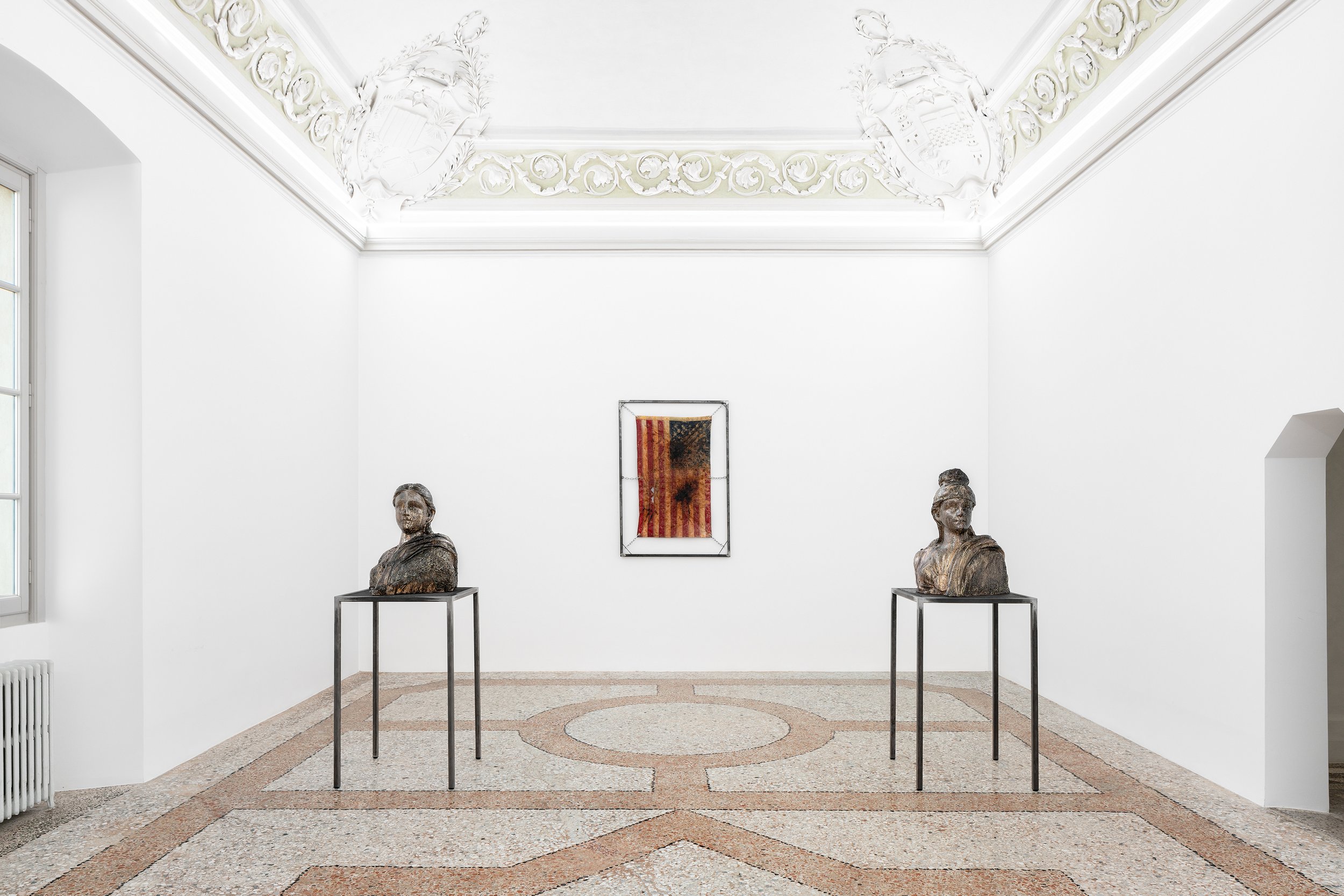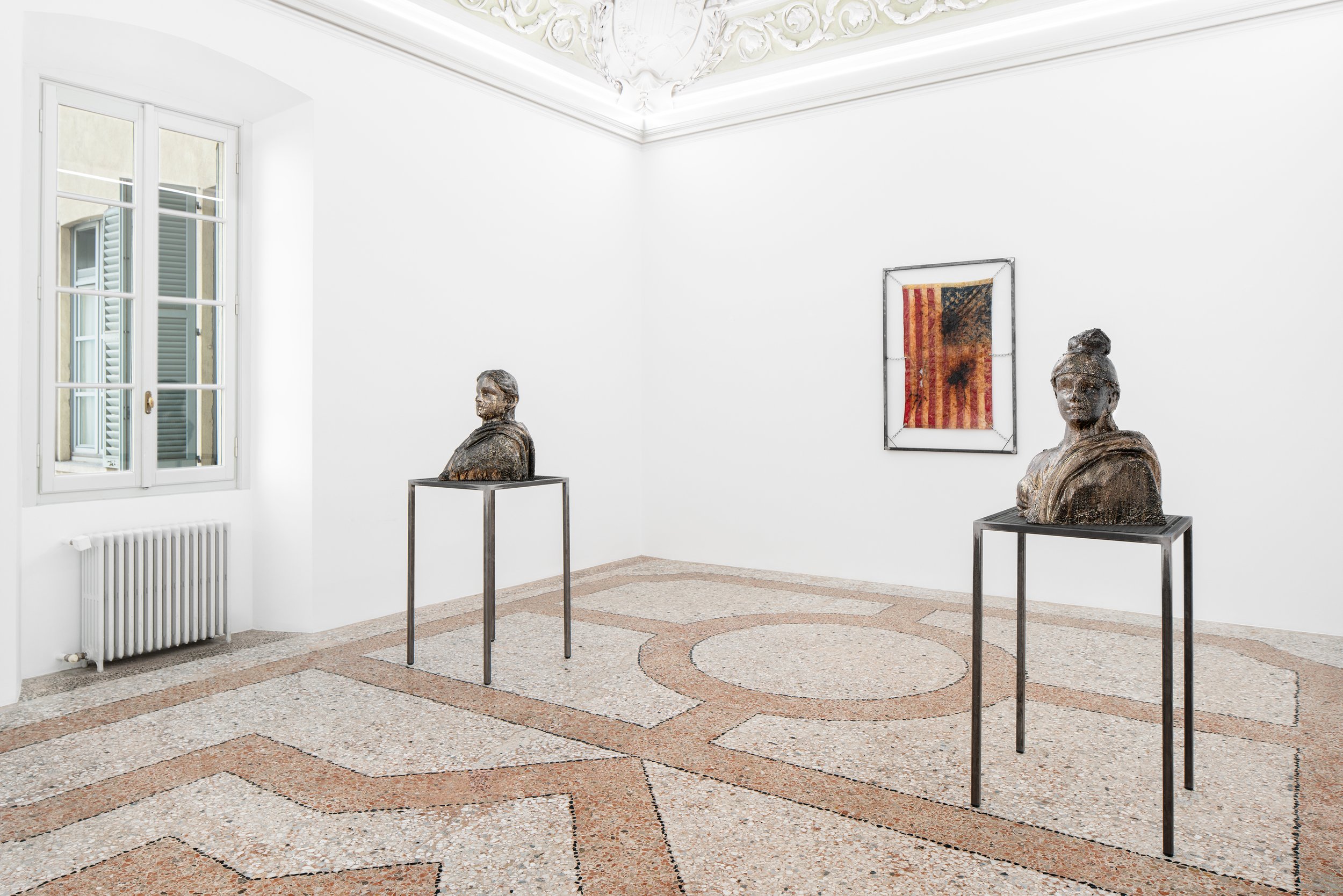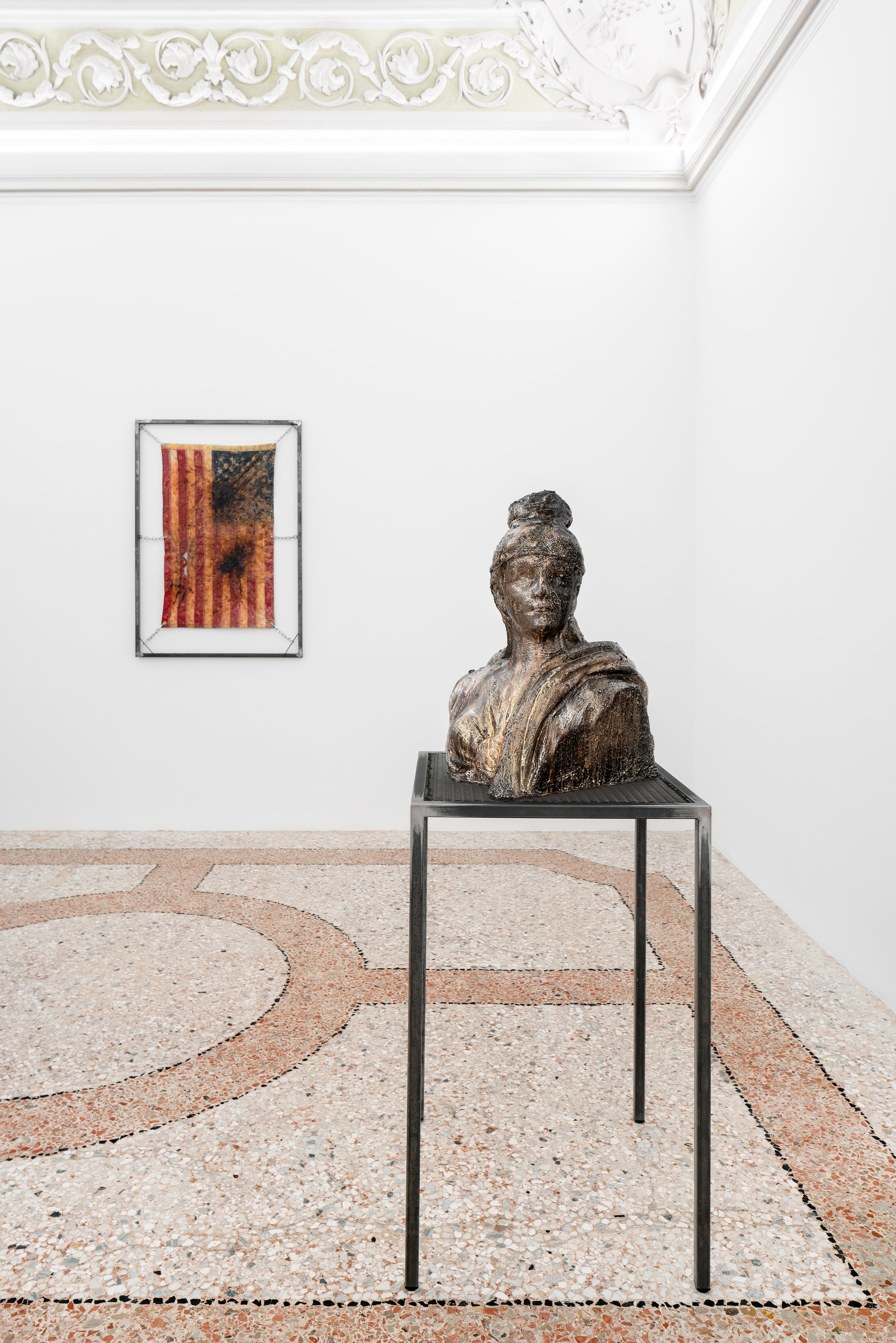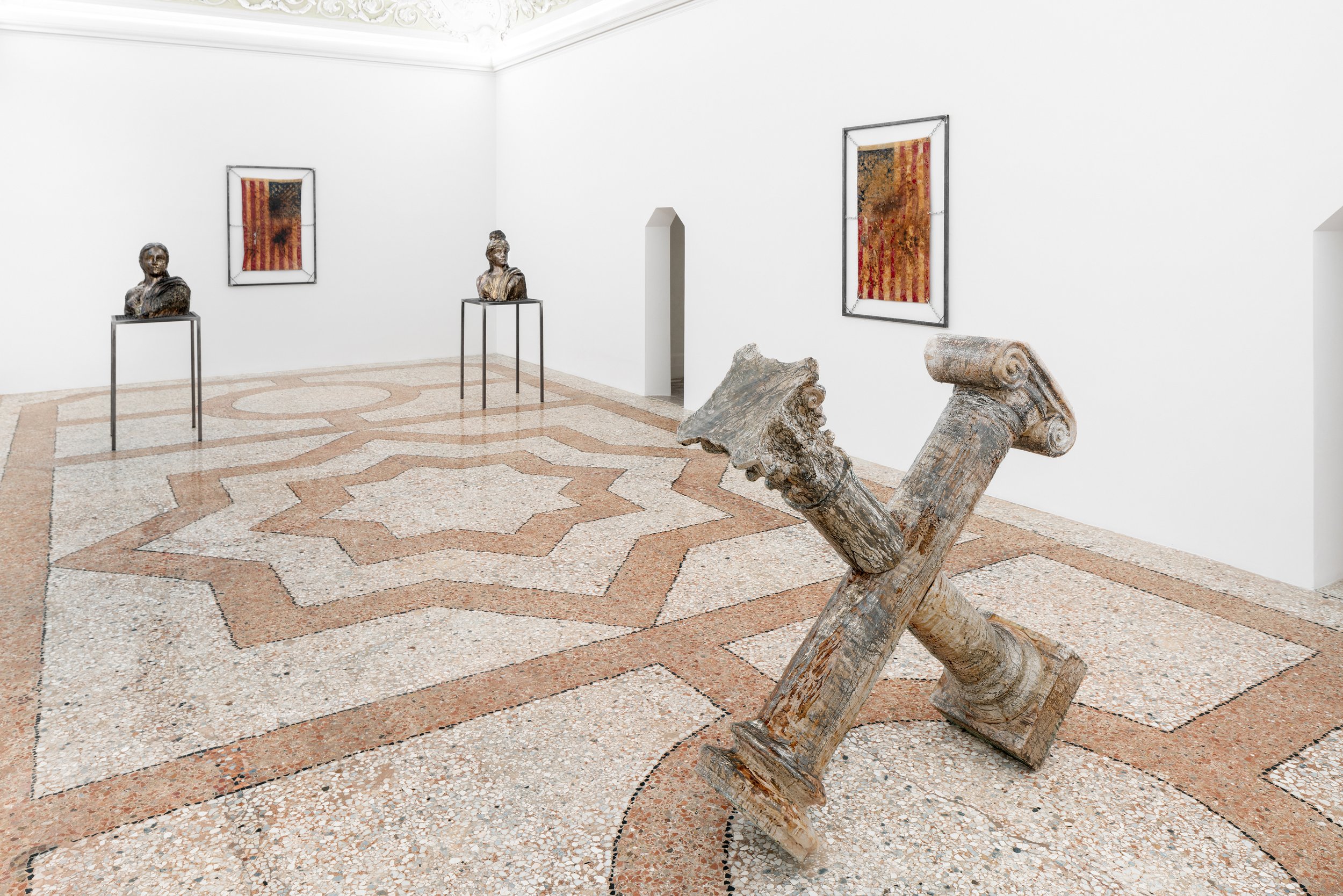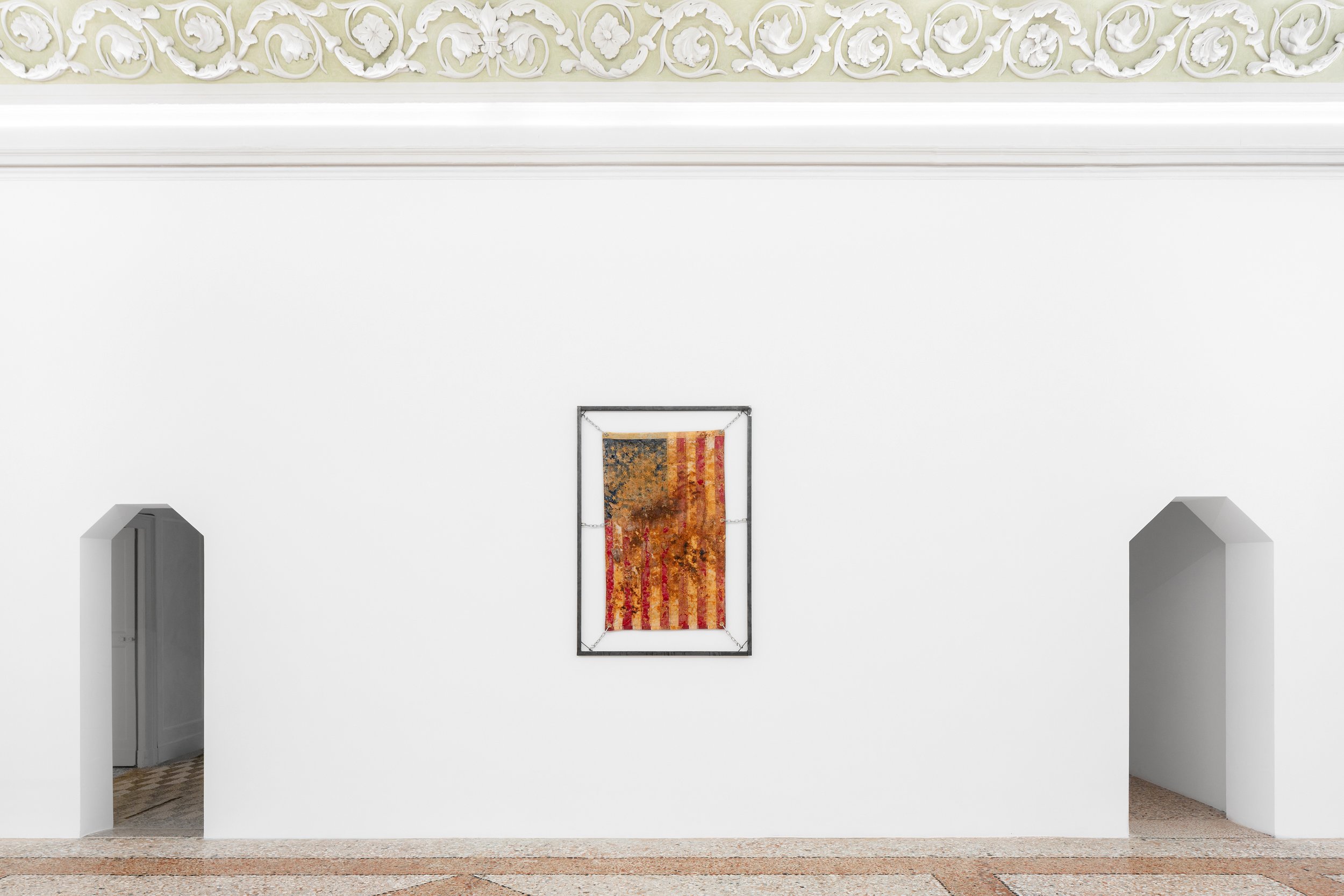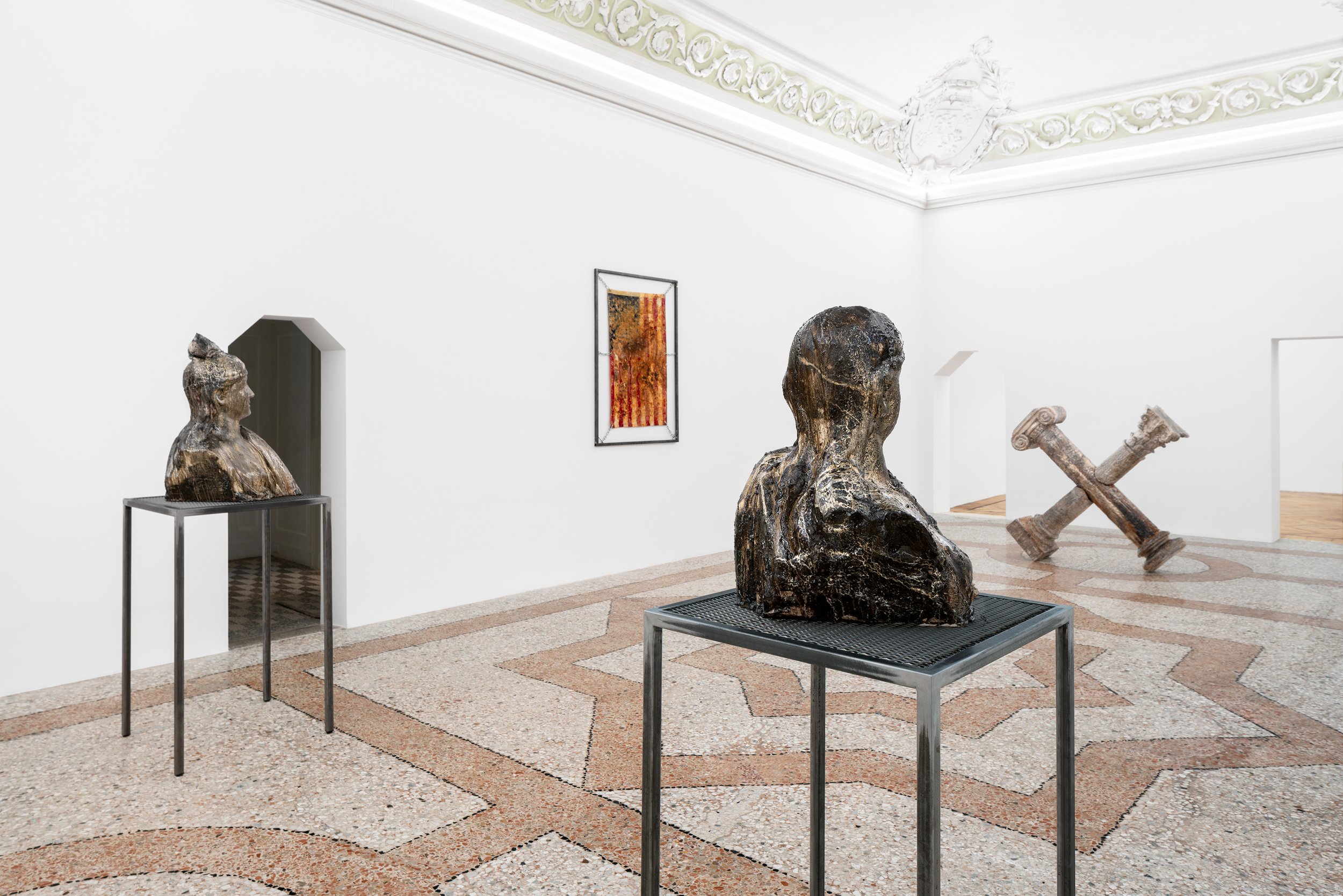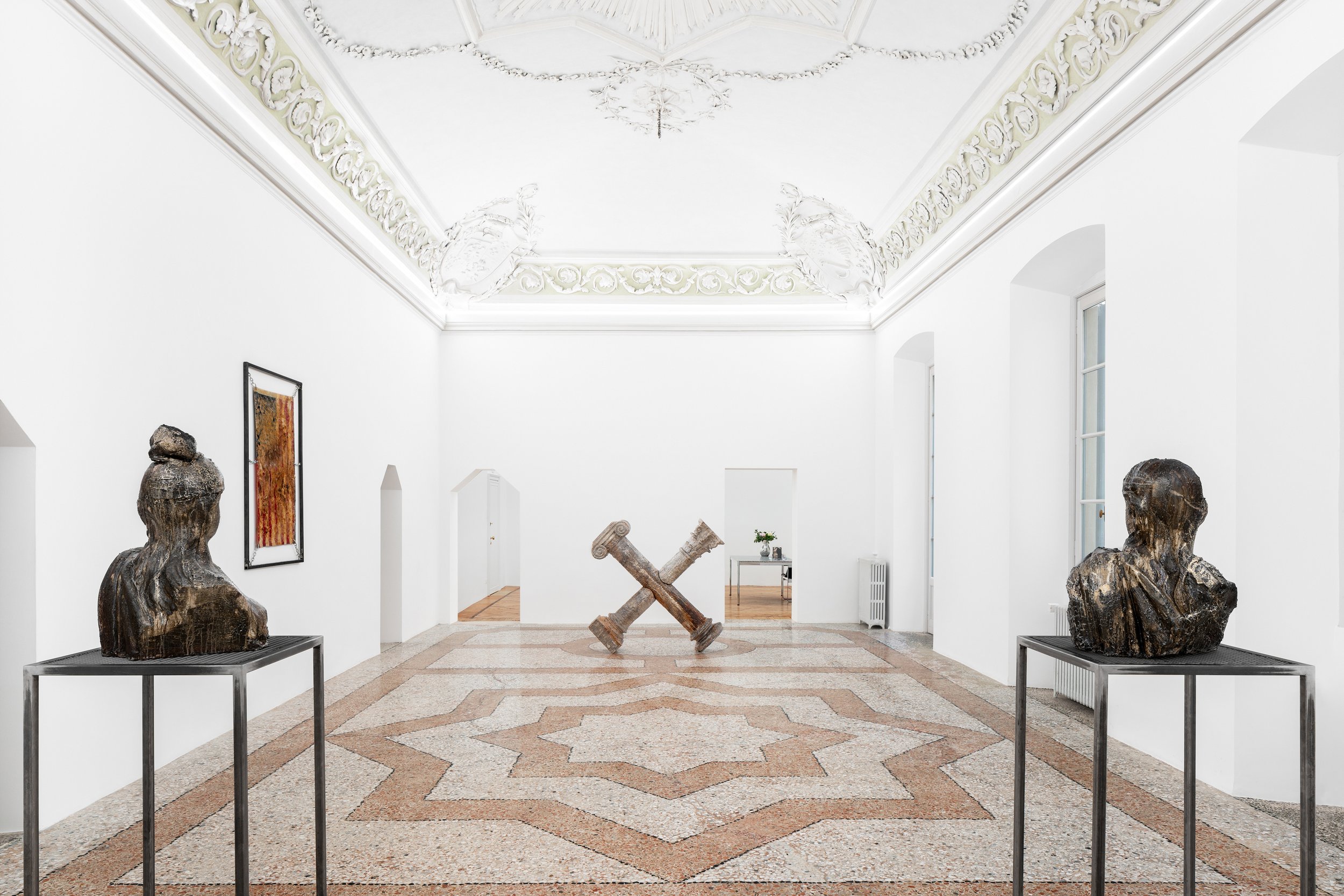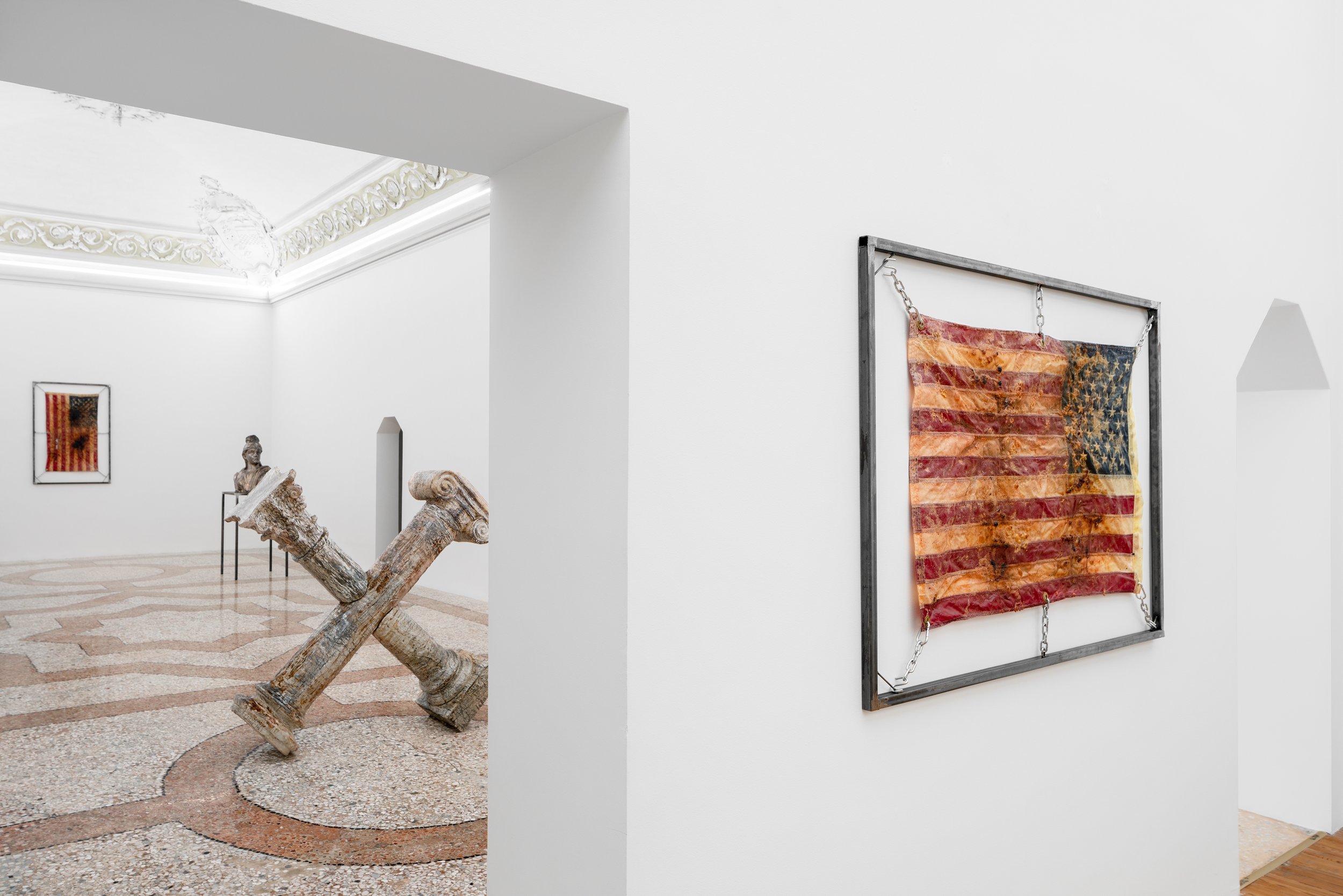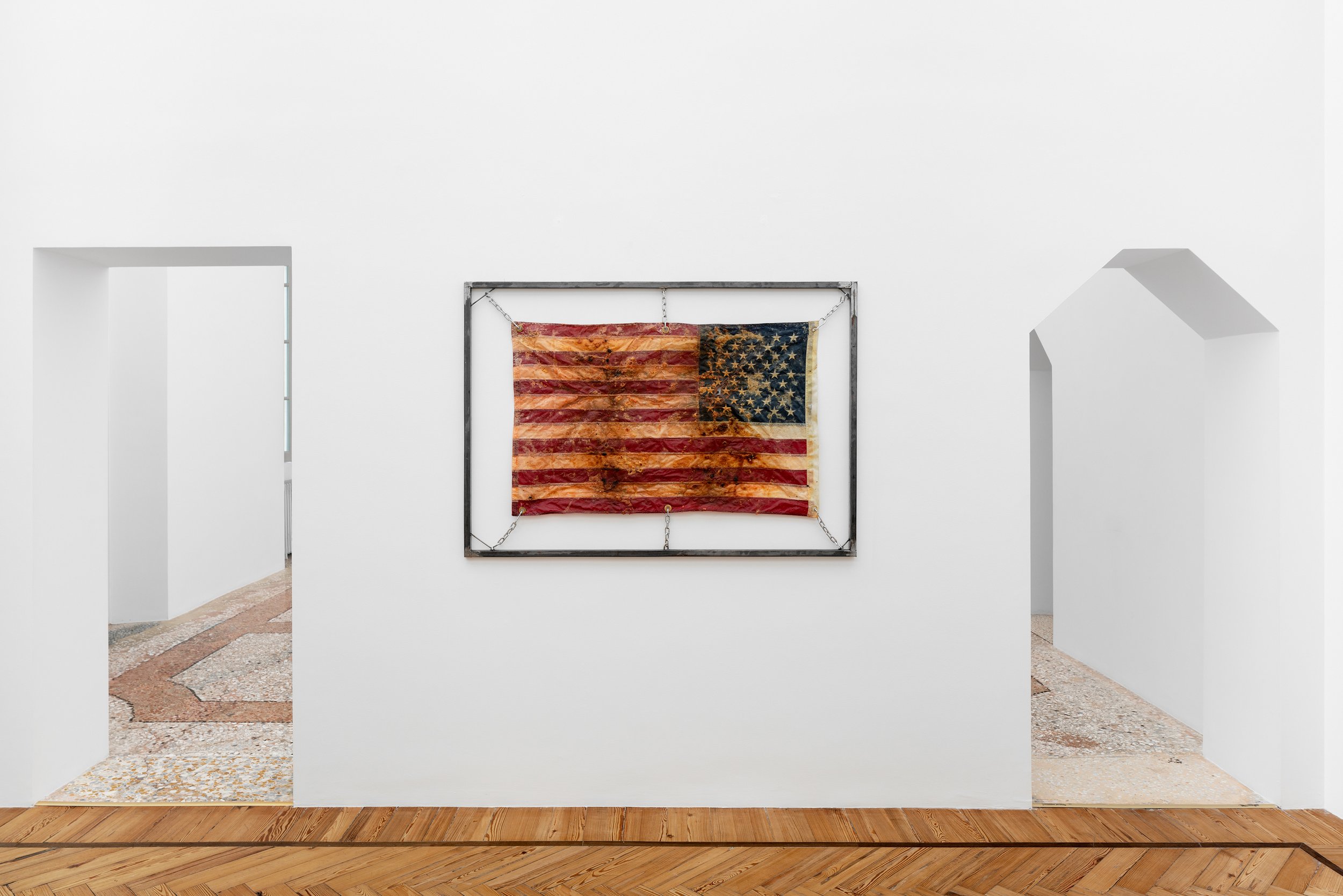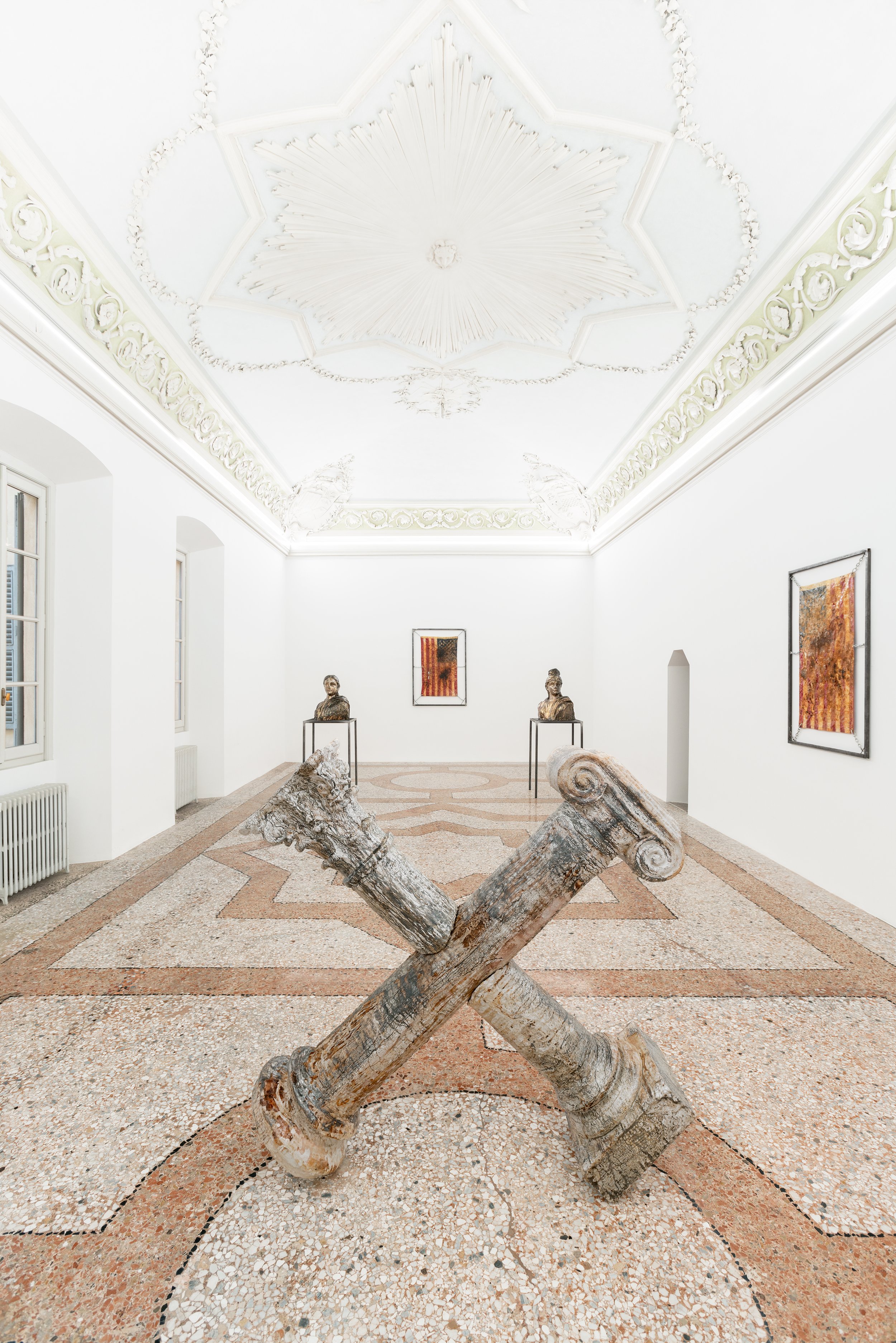A Past That Is Future Tense, June 8 - July 14, 2023
Peres Projects, Milan, Italy
*Press Release below
“You enter a place. Stick out the tip of your tongue. Taste what lingers. The sense that something happens (happened) here…What lingers is here: now and now: here, a tug that times and untimes. You are thrown into a past that is a future tense. Tongue strains. What flavors place, what place flavors. Relation is made here. Rock to soil, soil to sweat, sweat to water, water to microbes, microbes to memory, memory to work.” – Christina Sharpe, Note 188, Ordinary Notes
Peres Projects is pleased to present A Past That Is Future Tense, an exhibition of new sculptures by American artist Kiyan Williams (b. 1991 in Newark, New Jersey, US). This marks the artist’s debut solo exhibition with the gallery in Milan.
In this new body of work Williams examines the lives of objects, reviving subterranean and obscured meanings through transforming the architectural forms and national symbols that structure dominant narratives of history and power. Williams develops their work by way of an object-oriented ontology that recognizes the essential dynamism of material entities. Their new works blend together gypsum plaster, chrome, and earth, expanding a visual language of ruination that collapses linear time.
Throughout the exhibition, Williams remixes structures and symbols that uphold empire. Two neoclassical columns - the architectural forms that uphold government buildings and represent classical notions of power, beauty, purity, and idealized body forms - collapse into themselves. The sculpture topples the usually vertical position of the pillars to form an X, a symbol for the unknown, a symbol for the indescribable, a symbol of negation, and the indicator on government identification for non-binary gender identity. Williams continues their practice of remixing and un/building architectural forms that structure dominant ideologies to suggest the elsewhere and otherwise on the horizon.
For the series Variations on Freedom, the artist made busts that draw on the neoclassical bronze statue crowning the U.S. Capitol, The Statue of Freedom, itself a pastiche of ancient Greco-Roman statuary. Treating the plaster sculptures with earth and chrome — a process by which soil and silver nitrate are layered into gypsum cement — Williams subverts the classical expressions of purity and beauty in the canon of Western art history.
Suspended by chains, three charred American flags hang in steel frames, covered with the residue of oil and batter. The Fried and Suspended Flag series (2023) addresses national flags as symbols of power, speaking back to the ideologies enshrined in and embodied by the American flag by refusing to comply with a symbol. The works were made in a participatory performance, in which Williams invited the public to season, batter and deep-fry a collection of American flags, imbuing the emblem with new meaning. The flags are a facilitation of collective play, and an experience of simultaneous deconstruction and collective re-construction of meaning.
Williams figures the flags in artistically formal terms: the seasonings stand in for pigment, while the flag becomes canvas, and the hardened coatings of food further bridge the pictorial with the sculptural. While the works take up everyday foodways that contribute to American culinary culture — spice mixes can vary, and are expressive of region — the use of spices here also refers to the early circulation of commodities through colonial expansion.
The gesture of flag-frying thus contains multiple and sometimes contradictory meanings: not only does Williams stimulate vital dialogue around nationhood and colonial histories, their work also resonates deeply with questions of belonging, practices of community-building and the shared experience of care. By reorienting signification across a range of artistic practices, the artist triggers a temporal collapse of past, present, and future, exploring the ways in which the symbolic meaning of objects is accrued over time, but also attesting to how meaning can shift, challenge, and change.
This is Kiyan Williams’ debut solo exhibition with Peres Projects. Their work has been presented in numerous exhibitions, including recent solo exhibitions A Crack Beneath the Weight of it All, Altman Siegel, San Francisco (2023), Hammer Projects: Kiyan Williams, Hammer Museum, Los Angeles (2022), Un/earthing, Lyles and King, New York (2022), Reaching Towards Warmer Suns, the Anderson Collection, Stanford University, Palo Alto (2021), and something else (Variations on Americana), Recess Art, New York (2020). Williams has also participated in numerous group exhibitions, including MIT List Visual Arts Center, Cambridge (2022), The Aldrich Contemporary Art Museum, Ridgefield (2022), the Visual Arts Center of Clarington, Bowanville, Ontario (2021), The Shed, New York (2021 and 2019), the Leslie-Lohman Museum, New York (2021), the Hirshhorn Museum, Washington D.C. (2020), the Socrates Sculpture Park, New York (2020), the Brooklyn Museum, New York (2019), and the Sculpture Center, New York (2019), among others. Their work is currently on view in group exhibitions at the Hirshhorn Museum, Washington, D.C. and Unclebrother, Hancock.
